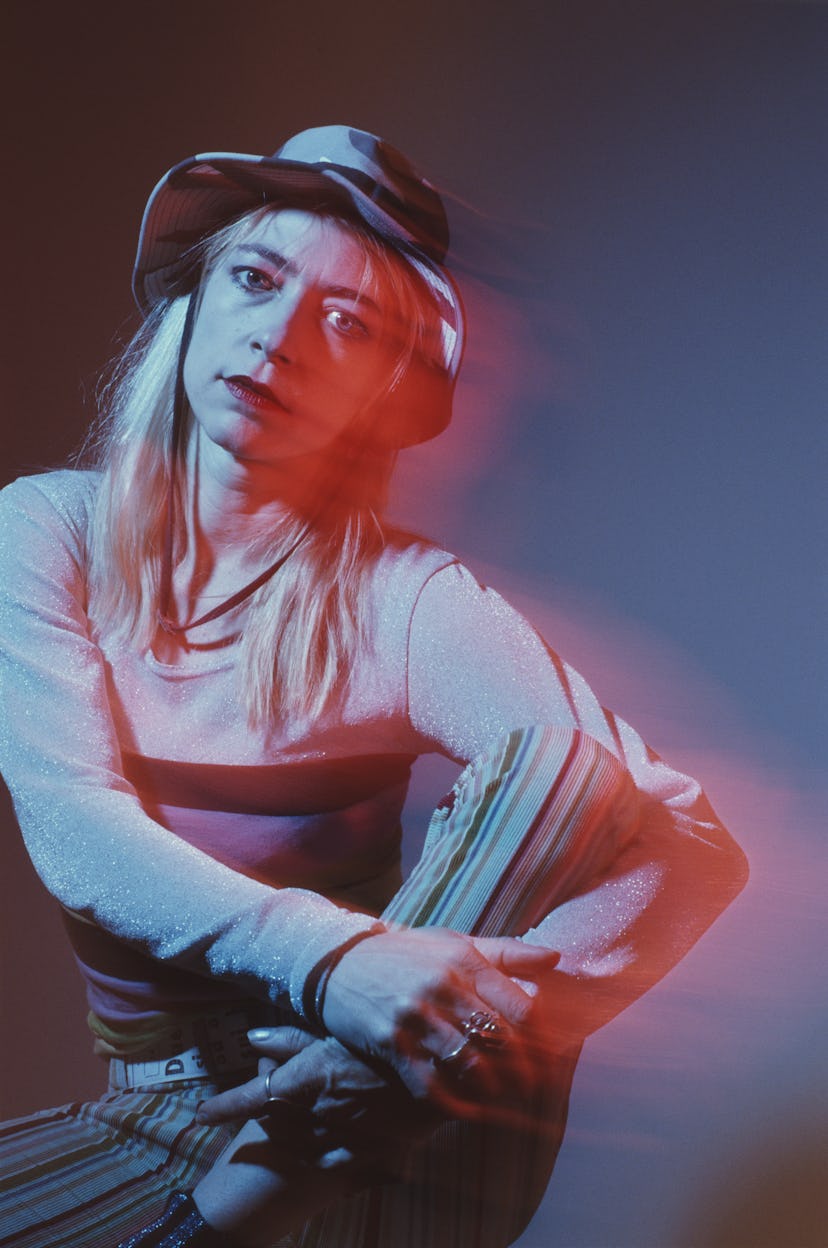Welcome to Kim Gordon’s Second Youth
Post-Sonic Youth, post-marriage, Kim Gordon is now even more of a force to be reckoned with in her sixties.

“It would be unfortunate and undesirable for either Body/Head or [Kim] Gordon’s exhibition to be judged in light of her biography,” says the music writer Frank Guan in Noise Name Paintings and Sculptures of Rock Bands That Are Broken Up, Gordon’s new book out next week that includes both a collection of her paintings and a record by Body/Head, her new band with Bill Mace.
As for how Gordon, now 63, and a few years past the well publicized break-ups of both Sonic Youth and her marriage to former frontman Thurston Moore, feels about that?
“I don’t care,” she said with a laugh. “I appreciate that [the band] meant a lot to a lot of people, and I am really proud of all the work we did,” she went on, before adding: “For the most part. I just feel like I had to do interviews about it for so long, I’m a little sick of answering questions about Sonic Youth.”
She had just flown back east from her new home in Los Angeles for a few signings at the New York Art Book Fair, where her drawings were also being made into limited-edition tattoos.
There’s plenty more Gordon can talk about: In addition to the new book — which follows last year’s memoir, Girl in a Band — and Body/Head’s second album, out next month, Gordon also has a new single out, marking the first time she’s ever released music under own name. Then there’s the renaissance of her 90’s clothing label, X-Girl, and, perhaps most importantly, a renewed focus on the visual art she’s been making as long as she’s made music, since the 80’s. She’s now also trying something new with that, too: Noise Name Paintings marks the first time she’s married her art with music, two areas which, until now, she’d always approached differently, considering them “utterly separate art forms.”
“It just sort of happened,” Gordon said of the change. She started the titular “noise paintings” series in 2008, and it soon showed at respected galleries like 303 and White Columns, both in New York. During that time Gordon also founded Body/Head, a more conceptual band whose noise-drowned performances she likens to “one-act plays.” Art collector and Deste founder Dakis Joannou caught one of their shows at Frieze London in 2014, and, charmed when Gordon refused to tone it down for an unamused gallerist shouting in her face, asked Gordon to collaborate on this book, which his Deste press is publishing.
Exclusive: Inside Kim Gordon’s New Art Book
They started with an exhibit of her paintings and sculptures at the Benaki Museum in Athens, Greece, which they kicked off with a Body/Head performance on the museum’s rooftop that became the eerie soundtrack to the show, a tomb-like space amid a collection of ancient Greek art that Gordon painted entirely white. The space, which Gordon described as “kind of an anthropological museum, the way the Met is, but a giant mansion,” seemed an appropriate place for her to bring all her work together. “Benaki’s heart is buried in the wall, and I guess we felt like he really put his heart in it,” she explained.
The book documents all of that, along with a vinyl record of the performance. Since then, Gordon seems to have embraced combining different aspects of her work, especially with tools from her past. She asked the artist Raymond Pettibon, who used to work on Sonic Youth’s cover art, to draw up an image for Body/Head’s new album cover of a wakeless ocean — a nod to No Wave, the music movement that took off in New York in the ‘70s, thanks in no small part to Gordon and Moore.
But Gordon has picked up some new collaborators as well: She moved back to her hometown of L.A. last year, and soon “sort of accidentally met” Justin Raisen, the producer behind hits for the likes of Charli XCX and Sky Ferreira. Originally planning to work with another artist, they started sending vocal tracks back and forth until their fooling around became “Murdered Out,” a meditation on the city’s car culture whose sound Gordon admits is her most accessible to date. Its release under her own name wasn’t meant as a statement, but another thing that “just sort of happened naturally,” Gordon said casually.
“I feel strangely removed from my name,” she added. “I just feel like pushing my name on an image, like on Twitter or something, is in a way almost like somebody else.”
It’s an idea not too far off from the storyline of “The Realest Real,” Kenzo’s newly released film, a playful meditation on internet culture and identity by Carrie Brownstein in which Gordon appears. Gordon claimed to be “embarrassed” at how small her role got cut down, but she immediately brightened at the mention of Brownstein, whom she described as “so professional, she can do anything.”
I pointed out that, especially now, one could say the same for Gordon. She immediately launched into a description of how her schedule has simply freed up more for art since her daughter moved on to college, she herself has moved out of Massachusetts to L.A.
“I don’t know, yeah, since my marriage broke up I guess I’ve been working more,” she said. After a pause, she added, “Sonic Youth was my main source of income. It’s not like I’m a wealthy bass player, you know?”